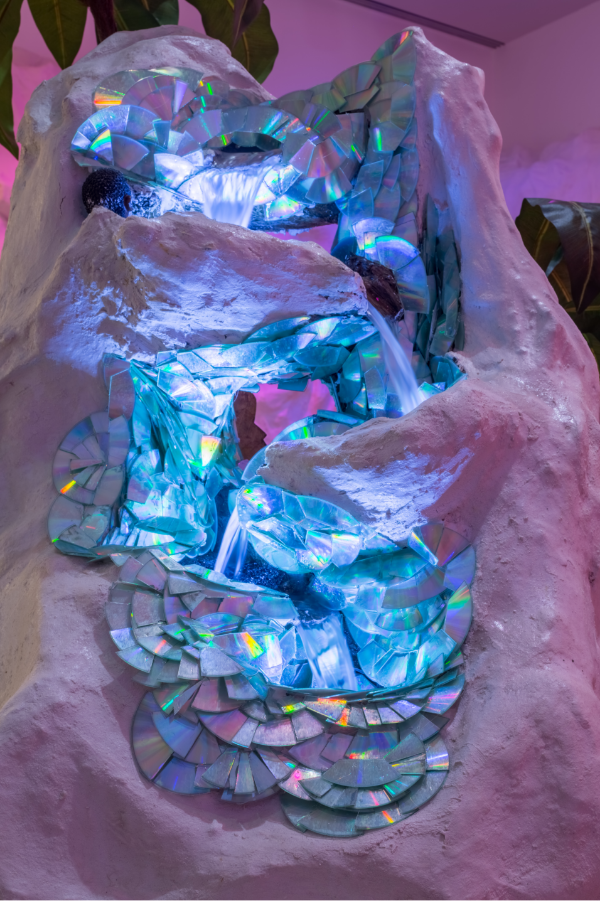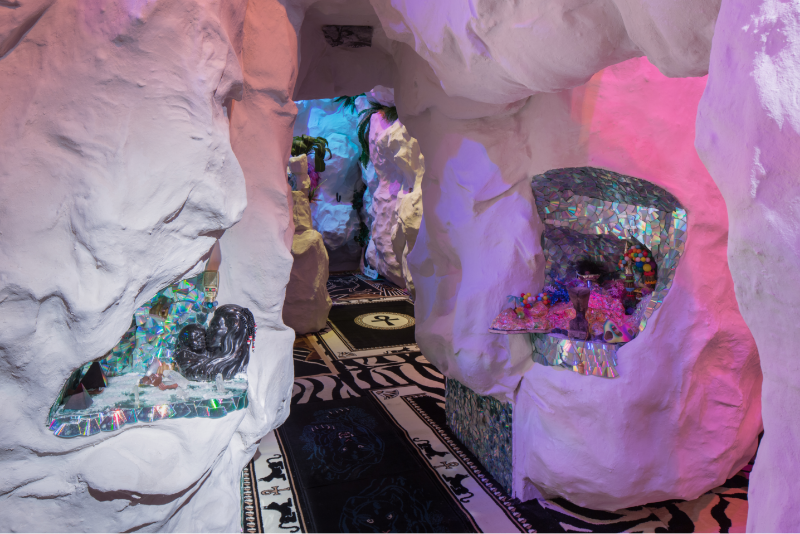The aesthetics and content of we still here, there (2018), Lauren Halsey’s current installation at the Museum of Contemporary Art, Los Angeles, are deeply rooted in Afrofuturism—a cultural philosophy that merges magical realism, science fiction and technoculture to critique the present day and historical dilemmas of black people. Typically, Afrofuturistic work features depictions of African roots, specifically Egyptian, which Halsey does through her shrines of African leaders and African rugs that line the entire installation. Other details, such as the music playing in the background and the aforementioned voiceovers are direct odes to Afrofuturistic trailblazer, Sun Ra.
MOCA featuring a work entrenched in Afrofuturism comes at a particularly timely moment, as the movement has been flung into the mainstream thanks to the music and fashion of celebrities like Beyonce, Rihanna and FKA Twigs, along with the blockbuster hit, Black Panther. Significantly, a number of other contemporary artists have begun to explore this territory as well. Historically, there is a dilemma between the reality that Afrofuturism envisions and the oppressive reality that exists.

Installation view of Lauren Halsey: we still here, there (2018) at MOCA Grand Avenue, courtesy of the Museum of Contemporary Art, Los Angeles, photo by Zak Kelley.
Halsey succeeds at the difficult task of addressing frequently discussed issues in a way that is novel and fresh. Gentrification has been front and center in discussions about historically black neighborhoods like Inglewood and South Central. From rising housing costs, to new developments to the upcoming Metro Crenshaw/LAX line set to open in 2019, the concern to preserve neighborhoods’ cultural identities and fight back against erasure is a battle cry for many. Halsey translates this sentiment into an artistic vision that is bright, colorful, full of life and zeal, and has a deep sense of both pride and play.
Halsey’s attention to detail gives the exhibition a particularly human feeling. Notable examples include a display of oils with absurd names like “Obama” that are ubiquitous in corner stores and botanicas, a book titled “A Dib of Dis a Dab of Dat”, and signs that read “TOGETHER WE CAN” and “NUBIAN”. Hair is celebrated at multiple points in the installation, with signs advertising braiding services. In a time when banning dreadlocks is still not considered discriminatory—black men and women are forced to cut off dreadlocks and dreads despite cultural and religious reasoning, and black students are punished for having natural hair—Halsey’s detail to celebrate black women’s hairstyles (much like Solange in “Don’t Touch My Hair”) is both notable and of the moment.
Halsey has succeeded in creating a vision of her neighborhood that provides a window into how she sees it. It’s beautiful, colorful, full of detail and nuance, and celebratory of black culture. For a place that is often perceived as dangerous, dirty and needing to be “cleaned up” and gentrified, Halsey presents South Central as a paradise, and one can’t help but want to stay awhile in the world that she’s created.


